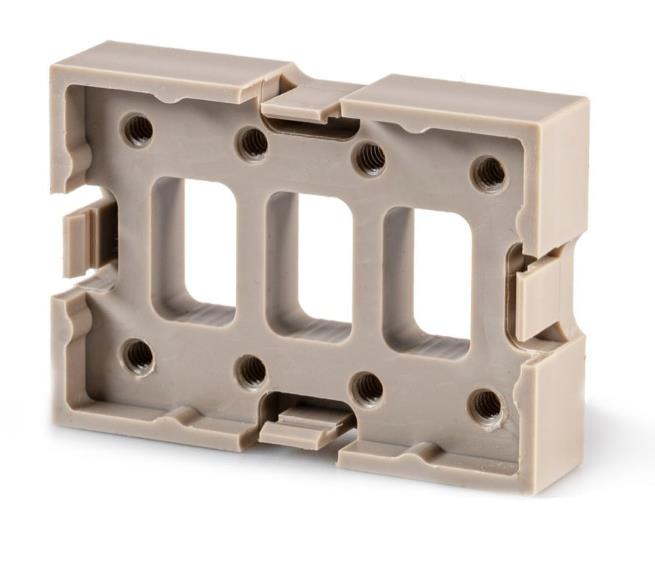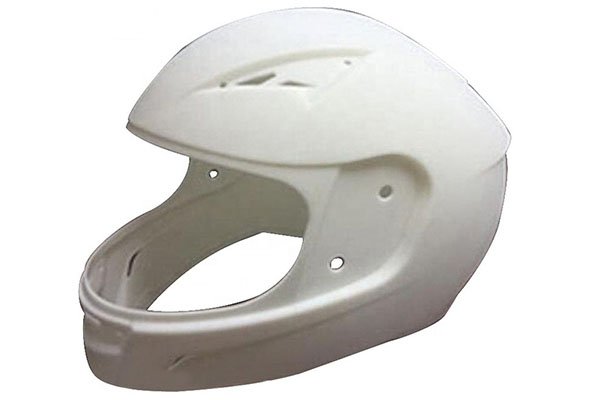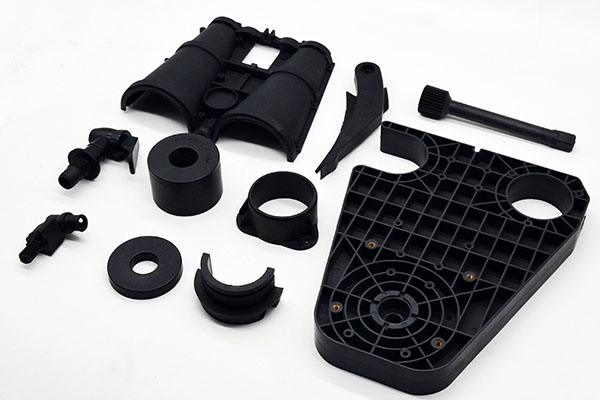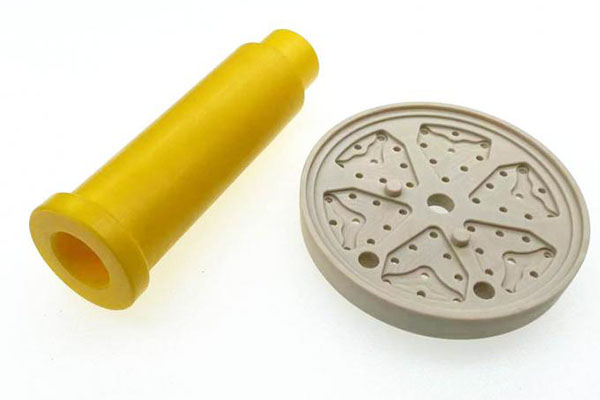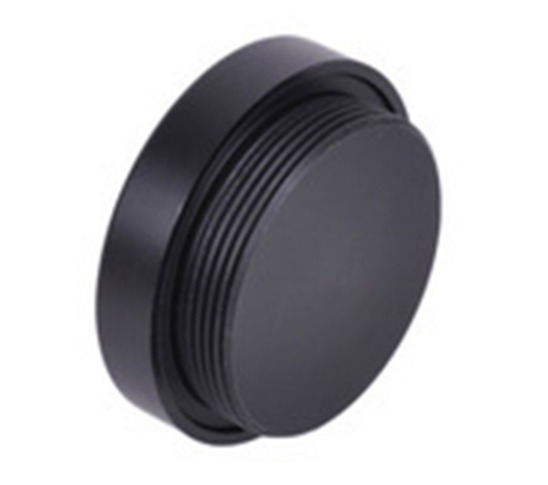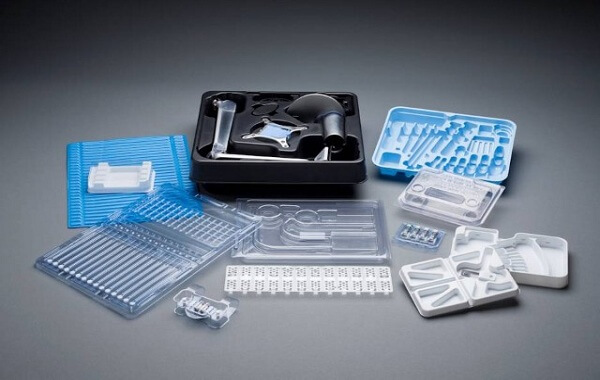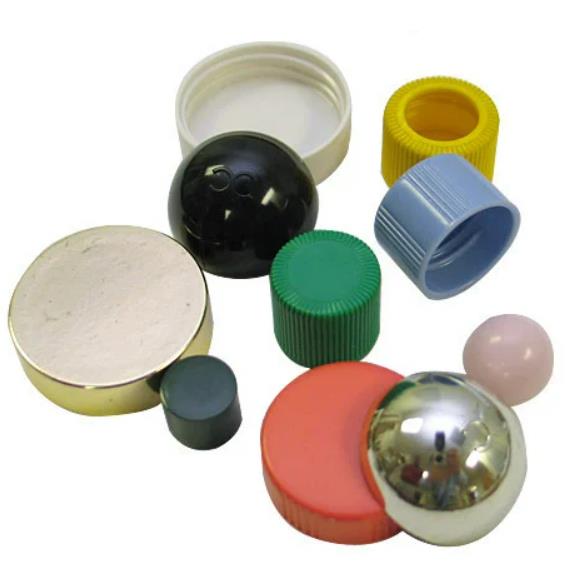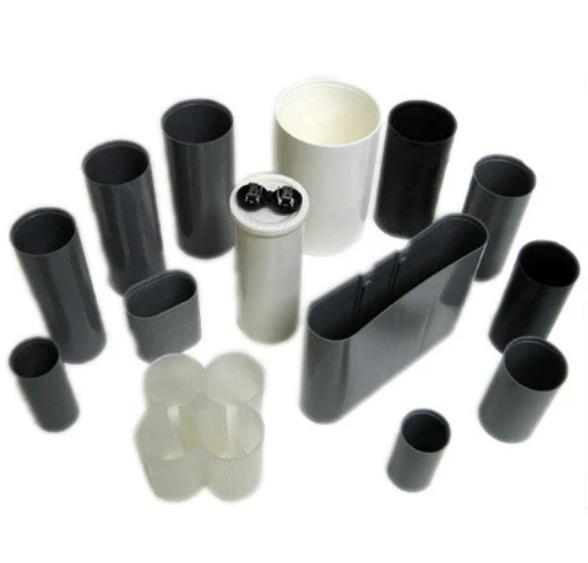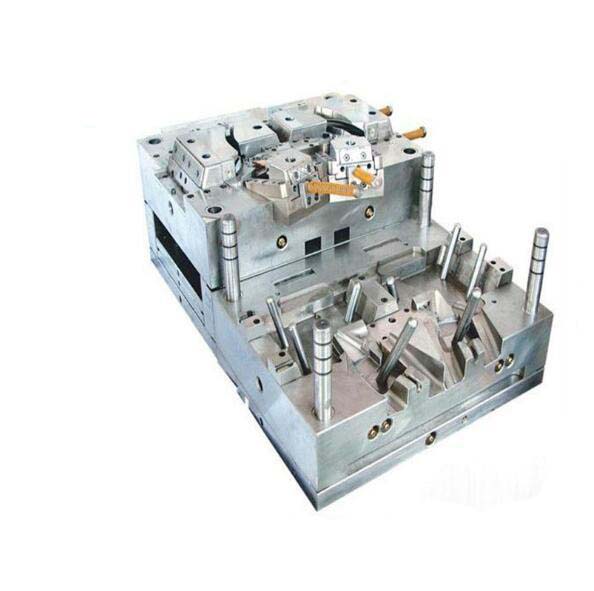Introduction
Definition of Injection Molding
Injection molding is a widely - used manufacturing process for producing plastic parts. It involves melting plastic pellets and injecting the molten material into a mold cavity at high pressure. Once the plastic has cooled and solidified within the mold, the mold is opened, and the finished part is ejected. This process is highly efficient and suitable for mass - production, capable of creating complex - shaped components with high precision.
Causes of Discoloration in Injection Molding
Discoloration in injection molding can stem from various factors, which can be broadly categorized into material - related, processing - related, and equipment - related factors. Understanding these causes is crucial for effectively preventing and addressing discoloration issues.
1. Degradation of Plastics
Plastics can degrade under certain conditions during the injection molding process. When plastics are exposed to high temperatures and high shear forces, the polymer chains can break down. For example, in the heated barrel of the injection molding machine, if the temperature exceeds the thermal stability limit of the plastic, thermal degradation occurs. Polyvinyl chloride (PVC) is a common plastic that is relatively sensitive to heat. At high temperatures, PVC can undergo dehydrochlorination, releasing hydrogen chloride gas, which leads to the formation of double bonds in the polymer chain and causes the plastic to turn yellow or brown.
The degradation process is also affected by the residence time of the plastic in the high - temperature environment. The longer the plastic stays in the heated barrel, the more likely it is to degrade. Additionally, shear forces generated by the rotation of the screw in the barrel can also contribute to degradation. High - shear rates can mechanically break the polymer chains, accelerating the degradation process.
2. Impurities in Raw Materials
Impurities in raw materials can have a significant impact on the color of injection - molded parts. Metal ions, such as iron, copper, and nickel, can act as catalysts for oxidation reactions in plastics. For instance, if there are iron impurities in polyethylene (PE) resin, they can accelerate the oxidation of PE during the molding process, causing the part to turn yellow or brown. Dust and other particulate impurities can also cause discoloration. When dust particles are mixed with the plastic pellets, they can create spots or streaks of different colors in the final product.
Impurities can enter the raw materials during the manufacturing process of the plastic resin, during storage, or through contamination in the handling environment. To detect impurities, techniques such as spectroscopy (e.g., infrared spectroscopy, X - ray fluorescence spectroscopy) can be used to analyze the chemical composition of the raw materials, and microscopic examination can be carried out to identify particulate impurities.
Temperature plays a crucial role in injection molding, and improper temperature control can lead to discoloration. If the barrel temperature is set too high, the plastic can overheat and degrade, resulting in a change in color. For example, for acrylonitrile - butadiene - styrene (ABS) plastic, the recommended barrel temperature is usually in the range of 200 - 250°C. If the temperature exceeds 260°C, ABS may start to decompose, and the product may turn yellow or black.
不均匀的温度 distribution within the barrel can also cause problems. Hot spots or cold spots can lead to inconsistent melting and degradation of the plastic. The nozzle temperature is also important. A too - high nozzle temperature can cause the plastic to overheat as it passes through the nozzle, resulting in discoloration at the gate area of the molded part. Similarly, an inappropriate mold temperature can affect the cooling rate of the plastic. If the mold temperature is too high, the plastic may have a longer residence time in the molten state, increasing the risk of degradation.
To control temperatures effectively, regular calibration of temperature sensors (such as thermocouples) is necessary. Additionally, proper insulation of the barrel and nozzle can help maintain a stable temperature. Adjusting the heating zones of the barrel based on the plastic type and the requirements of the molding process can also prevent temperature - related discoloration.
2. Injection Speed and Pressure
Excessive injection speed and pressure can cause frictional heat generation between the plastic melt and the mold components. When the plastic melt is injected into the mold cavity at high speed, it generates intense friction with the mold wall and the surface of the runner. This friction will cause the local temperature of the plastic to rise. For instance, during the injection molding process of thin-walled products, if the injection speed is too fast, the plastic melt will flow through the narrow runner and gate in a short time, generating a large amount of frictional heat, which will cause the plastic to degrade and discolor.
Excessive injection pressure can also cause the plastic to be overly compressed within the mold, further intensifying frictional heat generation. Different plastic materials and product designs have different requirements for injection speed and pressure. Generally speaking, for plastics with good fluidity, a lower injection speed and pressure can be adopted. For plastics with poor fluidity, it is necessary to appropriately increase the injection speed and pressure, but it is important to keep them within a reasonable range. Through mold design optimization, such as rationally designing the size and shape of the gate, the flow condition of the plastic melt can be improved, the generation of frictional heat can be reduced, and thus the risk of discoloration can be lowered.
1. Contamination in the Injection Machine
The injection machine's components, such as the screw, barrel, and nozzle, can become contaminated over time. Residual plastic in the barrel can carbonize if it is repeatedly exposed to high temperatures. This carbonized plastic can then mix with the new plastic during the next molding cycle, causing black spots or streaks in the product. For example, if there are small amounts of polyethylene left in the barrel from a previous run and it is over - heated and carbonized, when the next batch of plastic (e.g., polypropylene) is processed, the carbonized polyethylene will contaminate the polypropylene and lead to discoloration.
Oil and grease from the machine's lubrication system can also contaminate the plastic. If the seals around the screw or nozzle are damaged, oil can leak into the plastic flow path. To prevent contamination, regular cleaning of the injection machine is essential. The barrel should be purged thoroughly between different plastic grades or colors. Special cleaning compounds can be used to remove carbonized residues. Regular inspection and maintenance of the machine's seals can also prevent oil contamination.
2. Wear and Tear of Molds
Molds are subject to wear and tear during repeated use. The 分型面 (the interface between the two halves of the mold) can become worn, allowing plastic to leak and form flash. This flash can char or oxidize, and when it is incorporated back into the molded part during subsequent cycles, it can cause discoloration. The 冷却水道 in the mold can also corrode over time, especially if the coolant contains corrosive substances. Corrosion products can contaminate the plastic and lead to color changes.
Mold inserts and cores can also wear out, affecting the plastic flow and heat transfer within the mold. As a result, the plastic may not cool evenly, which can cause stress - induced discoloration. Regular inspection of the mold for signs of wear, such as scratches, dents, or corrosion, is necessary. When the wear reaches a certain level that affects the quality of the molded parts, the mold should be repaired or replaced. Using high - quality mold materials and proper mold maintenance practices, such as regular cleaning and lubrication, can extend the mold's lifespan and reduce the risk of discoloration due to mold wear.
Prevention Techniques for Discoloration
Material - handling Strategies
1. Proper Material Selection
When choosing plastic materials for injection molding, several factors related to the product requirements and the injection molding process need to be considered. Heat resistance is crucial. For applications where the final product will be exposed to high temperatures, such as in automotive engine components or household appliance parts near heat - generating elements, materials like polyetheretherketone (PEEK) with a high heat - deflection temperature (up to 343°C) or polyphenylene sulfide (PPS) with excellent heat stability should be selected.
Chemical resistance is another key factor. If the product will come into contact with chemicals, for example, in chemical storage containers or parts in the pharmaceutical industry, materials like polyethylene (PE) or polypropylene (PP) are good choices. PE has good resistance to many acids and alkalis, while PP shows excellent resistance to most organic solvents.
For products that require high mechanical strength, polycarbonate (PC) can be a suitable option. PC has high impact resistance and dimensional stability, making it ideal for products like safety helmets or electronic device housings. In the packaging industry, where transparency is important, polystyrene (PS) or polyethylene terephthalate (PET) can be used. PS offers high transparency and good processability, while PET is known for its excellent barrier properties and clarity, which is suitable for food and beverage packaging.
2. Material Storage and Handling
Proper material storage conditions are essential to prevent discoloration. The storage environment should maintain a temperature between 20 - 25°C and a relative humidity of 40 - 60%. High humidity can cause moisture absorption in hygroscopic plastics such as nylon (PA). Moisture in the plastic can lead to hydrolysis during the injection molding process, resulting in discoloration and degradation of the material. For example, if PA pellets are stored in a humid environment, the water molecules can break the amide bonds in the polymer chain, causing the plastic to turn yellowish and reducing its mechanical properties.
During handling, materials should be protected from oxidation and contamination. Avoid exposing the plastic pellets to open air for extended periods, especially those prone to oxidation. Use sealed containers for storage and transfer. When loading materials into the injection molding machine, ensure that the hopper and feeding system are clean to prevent impurities from mixing with the plastic. A proper material - handling process includes regular cleaning of the storage area, inspection of the packaging for any damage, and using dedicated handling equipment to avoid cross - contamination between different plastic grades.
Process Optimization
1. Precise Temperature Control
To achieve precise temperature control during injection molding, advanced temperature - control systems and equipment are necessary. Thermocouples are commonly used temperature - sensing devices. They should be regularly calibrated to ensure accurate temperature measurement. For example, a well - calibrated thermocouple can detect temperature changes within ±1°C, which is crucial for maintaining the stability of the plastic melting process.
The injection molding machine's barrel is usually divided into multiple heating zones. Each zone should be set according to the plastic's melting characteristics. For ABS plastic, the rear zone of the barrel can be set at around 200 - 220°C to start the melting process gradually. As the plastic moves forward towards the front zone, the temperature can be increased to 230 - 250°C to ensure complete melting. The nozzle temperature should be set slightly lower than the front - zone temperature, typically around 220 - 240°C, to prevent overheating of the plastic at the nozzle tip.
When adjusting the temperature, it is important to make small incremental changes and observe the effect on the molded parts. A sudden large - scale temperature adjustment can lead to over - or under - heating of the plastic, increasing the risk of discoloration. For example, if the temperature needs to be adjusted to address a discoloration issue, change the temperature by no more than 5 - 10°C at a time and wait for at least 10 - 15 minutes to allow the system to stabilize before evaluating the results.
2. Adjusting Injection Parameters
The optimization of injection speed, pressure, and 保压时间 (holding time) depends on various factors such as product size, shape, and wall thickness. For a small - sized, thin - walled product with a simple shape, a relatively high injection speed can be used to quickly fill the mold cavity before the plastic cools down too much. However, for a large - sized, thick - walled product with complex shapes, a slower injection speed may be required to ensure uniform filling and prevent air entrapment.
The following is a reference table for injection parameters based on different plastic materials and product characteristics:
| Plastic Material | Injection Speed (mm/s) | Injection Pressure (MPa) | Holding Time (s) |
| PP (Thin - walled) | 80 - 120 | 60 - 80 | 10 - 15 |
| PP (Thick - walled) | 40 - 60 | 80 - 100 | 15 - 25 |
| ABS (Thin - walled) | 60 - 100 | 70 - 90 | 8 - 12 |
| ABS (Thick - walled) | 30 - 50 | 90 - 110 | 12 - 20 |
For example, in the production of a thin - walled PP container, an injection speed of 100 mm/s, an injection pressure of 70 MPa, and a holding time of 12 s can be initially set. Through trial - and - error and continuous adjustment based on the actual quality of the molded parts, the optimal parameters can be determined. If the part shows signs of short - shot (incomplete filling), the injection speed or pressure can be slightly increased. If there are excessive flash or high internal stress, the injection speed or pressure can be reduced.
Equipment Maintenance and Cleaning
1. Regular Machine Maintenance
A regular maintenance plan for the injection molding machine is essential to prevent discoloration. The screw and barrel should be inspected every month. Check for any signs of wear, corrosion, or material adhesion. If the screw is worn, it can cause uneven plastic melting and mixing, leading to discoloration. Replace the screw and barrel when the wear exceeds a certain limit, usually when the surface roughness or dimensional deviation affects the plastic - melting and injection process.
The hydraulic system should be maintained regularly. Check the hydraulic oil level and quality every week. If the hydraulic oil is contaminated or has deteriorated, it can affect the performance of the injection molding machine, leading to inconsistent injection pressure and speed, which may contribute to discoloration. Replace the hydraulic oil every 1 - 2 years or according to the manufacturer's recommendations. Clean the oil filter regularly to prevent impurities from entering the hydraulic system.
2. Thorough Mold Cleaning and Inspection
Mold cleaning is crucial to prevent discoloration. Ultrasonic cleaning can be used to remove residues and contaminants from the mold surface. Ultrasonic waves generate high - frequency vibrations in a cleaning solution, which can effectively dislodge dirt and deposits. This method is especially effective for removing fine particles and organic residues that may cause discoloration.
Chemical cleaning can also be employed. However, choose the cleaning chemicals carefully to ensure they do not damage the mold material. For example, a mild acidic or alkaline cleaning solution can be used to remove stubborn stains, but it should be rinsed thoroughly to prevent any chemical residues from affecting the plastic during the molding process.
Regular mold inspection should be carried out. Inspect the mold's appearance for any signs of corrosion, scratches, or damage every time the mold is removed from the injection molding machine. Measure the key dimensions of the mold periodically, such as the cavity size and the thickness of the mold walls, to ensure they are within the tolerance range. Any changes in the mold's dimensions can affect the plastic flow and cooling, potentially leading to discoloration and other quality issues.
Yigu Technology's View
As a non - standard plastic metal products custom supplier, Yigu Technology attaches great importance to the issue of discoloration in injection molding. We understand that discoloration can severely impact product quality and production efficiency.
From the source, we strictly control the quality of raw materials. Our team conducts thorough inspections and tests on incoming plastic materials to ensure they are free from impurities and have excellent thermal stability. We work closely with reliable material suppliers to guarantee the consistency and high - quality of the materials.
In terms of production processes, we have a group of experienced engineers who are proficient in optimizing injection molding parameters. They carefully adjust temperatures, injection speeds, and pressures according to different product requirements, aiming to achieve the best - quality molded parts.
Regular equipment maintenance is also a key part of our production routine. We clean the injection machines and molds thoroughly and frequently, checking for any signs of wear or contamination. By doing so, we can prevent discoloration caused by equipment - related factors and ensure the smooth running of the production line. Our rich experience and advanced technology enable us to effectively address and prevent discoloration issues, providing high - quality products to our customers.
